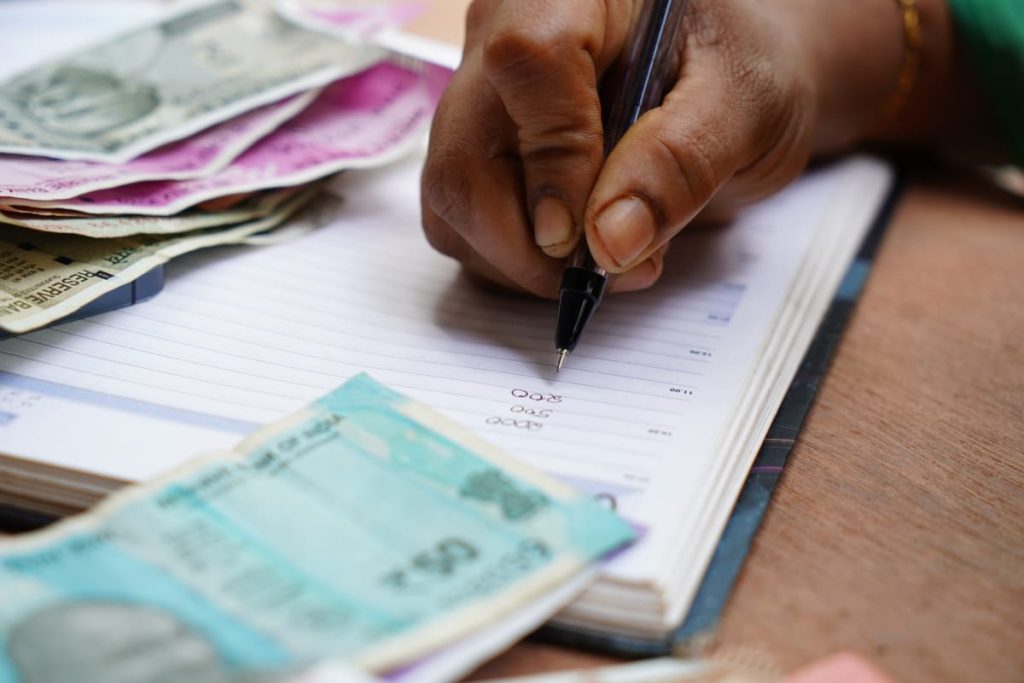
Do you find yourself stuck on a cycle of taking out new debt to pay back older debt? Yikes. That’s definitely not a good place to be.
The thing with borrowing money is that you don’t stay so happy for long. It almost comes with stages that I’m sure you’re all too familiar with.
First, you feel great. You’re getting to spend money you didn’t have to work for. Maybe you’d go out for a quick shopping spree, buy yourself things because “you deserve it,” and maybe treat yourself to a nice meal too. After all, it’s been far too long since you’ve had some extra cash to splurge on things that aren’t bills.
Next, the money’s gone but that’s alright. You’re still enjoying your new phone, your new shoes, or whatever it was that you decided to use it on. The endorphins are still doing their thing in your system. Plus, you have more than enough to get you by until the next paycheck.
Then, the due date comes. Suddenly, you start feeling an inkling of guilt for buying something you couldn’t afford. Though that’s still okay, you can still make the minimum payment and call it a day.
After a few months of going over the same cycle over and over again, you’ve racked up too much interest because you’ve only been paying the minimum amount so you are pressed to make another decision: should I take out a small loan to pay off my outstanding credit?
Repeat this sequence enough times and this is pretty much the beginning of any debt spiral.
More often than not, people opt to use band-aid solutions for problems that are already calling for the ER. This makes the situation worse or even creates additional problems for other people.
When you already find yourself stuck in a debt spiral, you first need to nip the problem in the bud – you need to stop spending. You have to scale back and remove all unnecessary expenses in your life, aka things that won’t kill you not to have.
Next, you need to liquidate; sell everything that may be considered as a nice-to-have than a must-have. If you have trouble trying to figure out what these are, ask help from friends and family. Resell what you can’t afford to have and use that money to pay off some of your most long-standing, high interest debts. This would give you a good head start to what you need to do next.
Last but not least, you have to pool all your outstanding debts and consider consolidating it into one big debt through a process called refinancing.
Not too familiar with it? Well, we’re all here today to discuss exactly what it’s all about. Let’s dive into the world of refinancing – what it is, what it does, and how you can benefit from it.
Refinancing In a Nutshell

Refinancing might seem a complicated term but once you understand how it really works, you’ll see how simple it actually is. Even if we just refer to the etymology of the term, with “re” meaning “again” and finance, it basically means “to finance something again.” Refinancing is exactly just that.
If you have outstanding debt from multiple companies that have accumulated over the years, then this type of loan might be something you should consider. As mentioned above, it’s easy to get trapped into a debt spiral, especially during your early 20’s when you’ve just started earning and no one really taught you anything about how to handle your finances properly. It is exactly when you’re at a place where you feel stuck and unable to see the light at the end of the tunnel that refinancing can come to your rescue.
By definition, refinancing is a type of loan that can help you pay off other outstanding debts that you may have with other financial institutions. In other words, a loan for loans. There are a couple of reasons as to why people might want to consider refinancing and here, we discuss them below.
When Should You Consider Refinancing?

Primarily, an individual can apply for a refinance loan to consolidate multiple debts into one larger loan. What this does is simplify the repayment process for the loan consumer so instead of worrying about multiple debt obligations, often with varying interest rates, due dates, and repayment terms, they can apply for refinancing and have one company take care of all those loans in their stead. Of course, the loan consumer would still have to fulfill its debt obligations but this time, to the refinancing company that helped consolidate the previous loans.
Another reason why people might opt to refinance a loan is to cash out on a property. This is often applicable to property mortgage loans. Real estate loans are unique, in a way that it’s actually quite beneficial to purchase a property on mortgage. The reason for this is quite simple: real estate property appreciates in value over time.
Every year, residential and commercial property prices go up. This means that the property you bought on mortgage last year will not hold the same value next year – and this is a good thing. Generally speaking, as long as your property is located in areas that are of considerable demand, the value of it will go up. However, what does this all have to do with refinancing, you ask? Let us explain.
If you have your property appraised in the current market and have your mortgage refinanced by another company, ideally for lower interest, you can cash out the remainder of the loan’s proceeds after the old mortgage has been fully paid off. Because your property value has gone up as per the most recent appraisal, the loanable amount will also go up significantly exceeding the amount payable to the old mortgage.
If you use refinansiering av gjeld in this manner, you’re not only reaping the immediate benefits which can be low interest rates, longer repayment period, and smaller installments – you can actually profit from it as well.
What Are the Top Advantages of Refinancing?

As mentioned above, there are many benefits to refinancing a loan or multiple loans. Let’s discuss them one by one below:
1. All Your Debt in One Place
You can say goodbye to the headache of dealing with multiple debts when you apply for a refinancing. Instead of stressing yourself out trying to meet minimum payments for different due dates, you can repay your debt obligations to only one company. This makes the process much simpler and hassle-free. It can also help you save costs on convenience fees and such, when using third party applications for paying off each loan.
2. Reduce Your Interest Rates
One very frustrating thing about paying back a loan is that you usually aren’t paying for the actual loan itself. Most of what you pay will cover the interest of the loan more than the principal, which simply goes straight to the banks’ pockets. Also, micro loans are notorious for placing very high interest rates on short term loans.
Sure, they’re pretty convenient considering how fast the approval process is for these types of loans but they sure bite back hard with those steep interests. If you have multiple micro loans that have over 3-4% interest per month, you are bleeding money unnecessarily. Consolidate your debts with a refinance loan and enjoy lower interests as most companies would offer more competitive rates to encourage people to refinance.
3. Extend Your Repayment Period
If you have multiple micro loans, chances are you are paying higher installments (including high interests) due to the fact that these loans are short-term. Most of them have a repayment period of 6 to 12 months – 3 if they’re really pushing it – and that makes your installment amount higher. If you refinance, you can apply for an extended repayment period to make the loan more manageable for you. If having smaller installments can help you pay on time consistently month after month, then that’s better than trying to pay bigger installments only to miss payments and get penalized with late payment fees.
4. Sleep Better at Night
Is it just me or are you the type of person who just can’t get a decent sleep at night knowing that you have bills and debt to pay? Having a big debt hanging over your head can really drain you mentally and physically as well. More so, if it comes in multiples and you have to deal with debt payments almost every 5 days. Consolidating your debt into one loan which you can comfortably pay in smaller installments every month can give you the peace of mind that you badly need at this point. Sleep better at night knowing that you only need to pay 1 fixed installment on 1 fixed date every month.
There you have it. There are possibly more benefits to refinancing than what we have here but all you got to do is experience it first-hand and enjoy them yourself! Here’s to taking your first step to a debt-free life!
